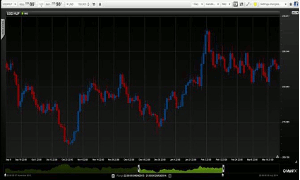Now that global developed markets seem to have recovered somewhat from the financial crisis, Justin Pugsley of MahiFX wonders whether the carry trade could stage a comeback.
The intense volatility in emerging market currencies cost many carry traders dearly as the US Federal Reserve winds down its quantitative easing program. However, that same shift in the monetary cycle could slowly resurrect the popularity of the carry trade.
The carry trade, which involves borrowing a low interest rate currency to buy a higher yielding one and pocketing the difference, has had a rough time since 2008. The period has seen regular bouts of volatility, which can quickly render carry trades unprofitable.
But with a number of developed countries looking poised to raise interest rates in the not-too-distant future—the UK, US, and New Zealand have already started—there could be a case for the carry trade to make a gradual come back.
That’s particularly the case—if—those rising interest rates are a sign of a more benign economic environment where the carry trade can flourish over longer time frames. Indeed, Haruhiko Kuroda, the governor of the Bank of Japan told a parliamentary committee last week that there is a growing momentum towards JPY-funded carry trades.
USD/HUF—This Type of Choppy Action Makes Carry Trades Difficult
Interest-Rate Differentials Likely to Remain Small
On the downside, the interest-rate differentials are likely to remain small. Inflationary pressures are weak, economic growth is hardly stellar, and debt burdens are still high in many developed countries suggesting interest rates will remain relatively low.
That should lead to less volatility in the currency markets, but that observation comes with some caveats, namely China.
The economic situation in China appears to be deteriorating with growing evidence that years of rampant speculation, over-lending, and over-investment are coming to a head. It’s still not yet clear if China’s policymakers will be able to manage any potential fallout or how they will do it.
If China does see a crisis similar to the one that hit the developed world in 2007-8 then that would certainly reduce carry trade opportunities due to volatility. There would also be large trend divergences between the safe haven currencies such as CHF, JPY, USD, and the more risk-orientated currencies of developed countries such as GBP, NZD, and AUD.
For the time being, the carry trade will probably only make sense for shorter time frames than what was often witnessed prior to 2008 as there are still a number of potential crises that could yet play out.
By Justin Pugsley, Markets Analyst, MahiFX



















